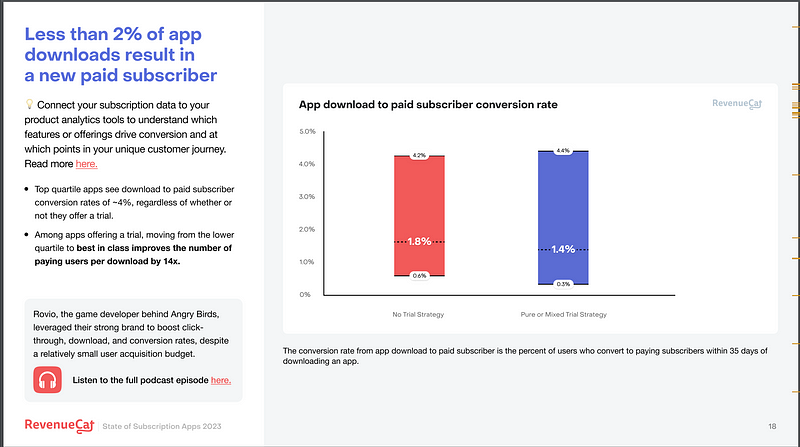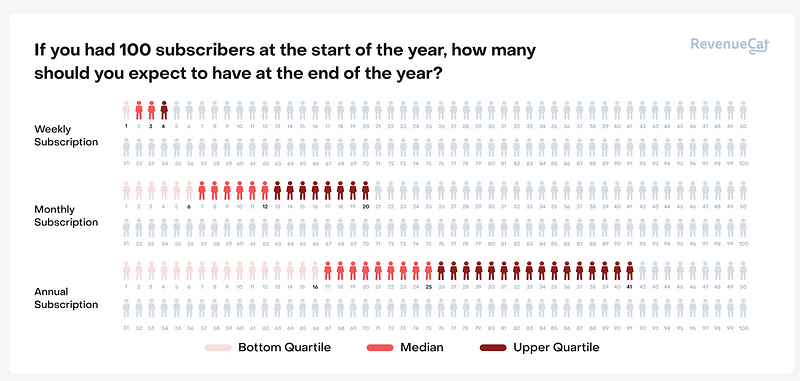
Why The Subscription Economy Is The Best Thing To Ever Happen To Software
I read this article from Joan Westenberg discussing the subscription economy.
The article outlines several problems with subscription software. Mostly around the cost for consumers. And I read this article and I did not agree with it at all. Because it’s one thing to be on the outside and scream about subscription services. But I’m an app developer, I know how these subscription services work on the inside.
And the way I see it subscription services are good for everyone. They’re good for the customer because they don’t have to spend as much and can cancel at any time. And they’re good for the developer because if they make a good product it makes them more money. And because of that they are incentivized to make a good product and that benefits the consumer even more. It’s win win.
I get the sense that there is a lot of misinformation about subscriptions. People look at their credit card statement and are like, “I wish I didn’t have to pay for so many subscriptions.” But would you really? It’s the age old question: whether it’s better to slowly peel off a bandage or if it’s better to rip it off all at once. But here slowly pulling off the bandage is a subscription and ripping it off is an upfront cost.
Sometimes it’s better to pull off the bandage all at once. But sometimes it’s better to remove the bandage slowly. And I think subscription software is one of those times where it’s better to remove the bandage slowly. Here’s why.
First I’d like to talk about the myth of the stupid consumer. This is the myth that consumers are fundamentally stupid so if you put a subscription in front of them they’re too stupid to know that this subscription will keep on charging them. And over time they will subscribe to more and more things and pay ridiculously large amounts of money each month.
Look, I wish this were true, it would make my life so much easier. But it’s not. Consumers are pretty smart. Consumers know that if they subscribe they are going to be charged over and over again. And because of this the conversion rates for subscriptions are very low. How low? Under 2% according to RevenueCat’s 2023 report.

Consumers are pretty smart. When they see a product they will ask themselves if the product is right for them. If it is they’ll subscribe. If it’s not they won’t.
And also just subscribing doesn’t necessarily mean they’ll stick around. It’s definitely not ‘predictable revenue streams month after month’. Yes, it’s more approachable, but people do unsubscribe. A lot of people. Here’s another chart from the RevenueCat 2023 report.

As you can see whatever you do on average half of people unsubscribe after the first year. You can try to keep more people by offering an annual subscription but even then the median is just 25% retention after 1 year.
So offering a subscription is not a free pass to print money. People know how much they are spending every month when they look at their credit card statement and they can cancel at any time.
And this actually forces companies to continuously improve their products. Like Photoshop. Imagine you bought Photoshop before they went subscription. Then imagine you got a Mac and found out that there’s this awesome app called Pixelmator Pro. Then if you already owned Photoshop there’s no incentive to try Pixelmator Pro, even if it did everything you needed and better because you already owned Photoshop. But now let’s factor in a subscription. All of a sudden Pixelmator Pro becomes much more appealing because it means you can cancel your Photoshop subscription. And if it doesn’t work out you can go back to Adobe.
So because they use a subscription Adobe has to continuously improve their product or they risk losing customers. And this drive to improve is powerful. I once heard on the SubClub podcast that one of the posts contemplated moving to only a month to month subscription (even though it made a lot of sense to offer an annual subscription) because they wanted the real time feedback to know what is working.
Ever since the rise of subscriptions there have been a lot of new exciting software projects. I’m not sure if this is because of subscriptions, but it sure didn’t hurt software development.
My two productivity focused apps: Stratum (iOS, Android) and Litany (iOS, Android) both use subscriptions. And using a subscription definitely incentivizes me to develop them more. Without subscriptions I would not be able to make my apps competitive with the big boys because everyone’s already locked in. But now I can.
Although I should mention I’m a little bit of a special case. I made the two apps above because I wanted to use them. I wanted an RSS app that didn’t suck so I made Stratum and I wanted an Anki clone that would intelligently make cards for you so I use Litany. Plus both of these apps now use backend resources to work which would be incredibly difficult to pull off without a subscription.
That’s another benefit of subscriptions: it can allow for apps that require backend resources like a database or other API. Like the GPT API. There are apps that are using GPT and are free. I don’t know how they do it. They must be losing tons of money. I do not have tons of money to give people free API access so subscriptions make it possible.
And there’s also a security argument to using subscriptions. The above article says:
But they’re still dodging around one simple fact. The best way for consumers to access software is to buy an app that does what they need and then choose whether or not to upgrade to the next version later.
Is it? Is it really? What if there’s a security vulnerability in an old version? It’s easy to patch the new version but will that patch be applied to every version? In a perfect world it would be, but not always. Especially if that old version relies on some other old version of someone else’s software that is not supported anymore. Then it may not even be possible to build the old version. And what if the old version is incompatible with the new version? I once renamed one of the columns in my database and that resulted in older versions breaking. What a nightmare.
It is so much easier to just have everyone running on the latest version. This is why people want code push (a system that allows you to bypass App Stores or updates and push code directly to peoples’ devices). Now I think this is a bit extreme, but there is a demand for this type of service.
The desire to have everyone running on the same version is why I think all of Apple’s software updates are free. They weren’t always free but I think Apple realized that having everyone on the latest version so they enjoy the product more, have all the security updates, and have support for the latest apps is worth it.
And subscriptions also allow for easy upgrading for additional features. All my apps have a free version with reduced features. Then if people want they can upgrade. Sure, you can do this by having multiple apps but then that means maintaining multiple app updates and having separate reviews. What a pain.
So all in all I’m really glad that subscriptions exist. Now having said that I will admit that subscriptions are not perfect. For a subscription to make sense you need to be continuously giving a lot of value to the customer. That’s how a subscription works: the customer gives money and the developer gives value.
So, for example, most games would not benefit from a subscription because players are not continuously getting value. You beat the game and that’s that. There are some ‘live service’ games which do continuously provide value. Usually in the form of some progression system. And here you could add a subscription and many have in the form of a battle pass. A lot of people hate live service games for whatever reason. I don’t know why. There are a lot of games I don’t like, but I don’t loudly complain about them.
The previous system of upfront purchases had the customer give money once and the developer gives value forever and ever. That’s just not a great business idea and results in subpar artificially crippled products. Allowing users to upgrade helps but still is not great as some users will never upgrade and be stuck on an old insecure version.
Subscriptions are the best way to make everyone happy. And, honestly, I’m surprised big companies have embraced subscriptions so much. It seems like big companies have the most to lose from such a system. But I won’t look a gift horse in the mouth. Subscriptions have enabled a new generation of software. A generation that delivers more value and is more agile. Welcome to the Subscription Economy!
If you liked this post and would like to stay updated with my future articles consider using my RSS app Stratum on iOS and Android. Also check out my language learning app Litany (iOS, Android) and my programming idle game ‘Pretentious’ (iOS, Android) based on my post on the GPL.





